Updated
Everything you need to know about Apple TV
Apple TV is a convenient solution for bringing your streaming services together in one place. At the same time, it offers a lot of benefits if you have Apple gadgets in your home and you can try with the Apple TV free trial. Learn all you need to know about Apple TV box here.
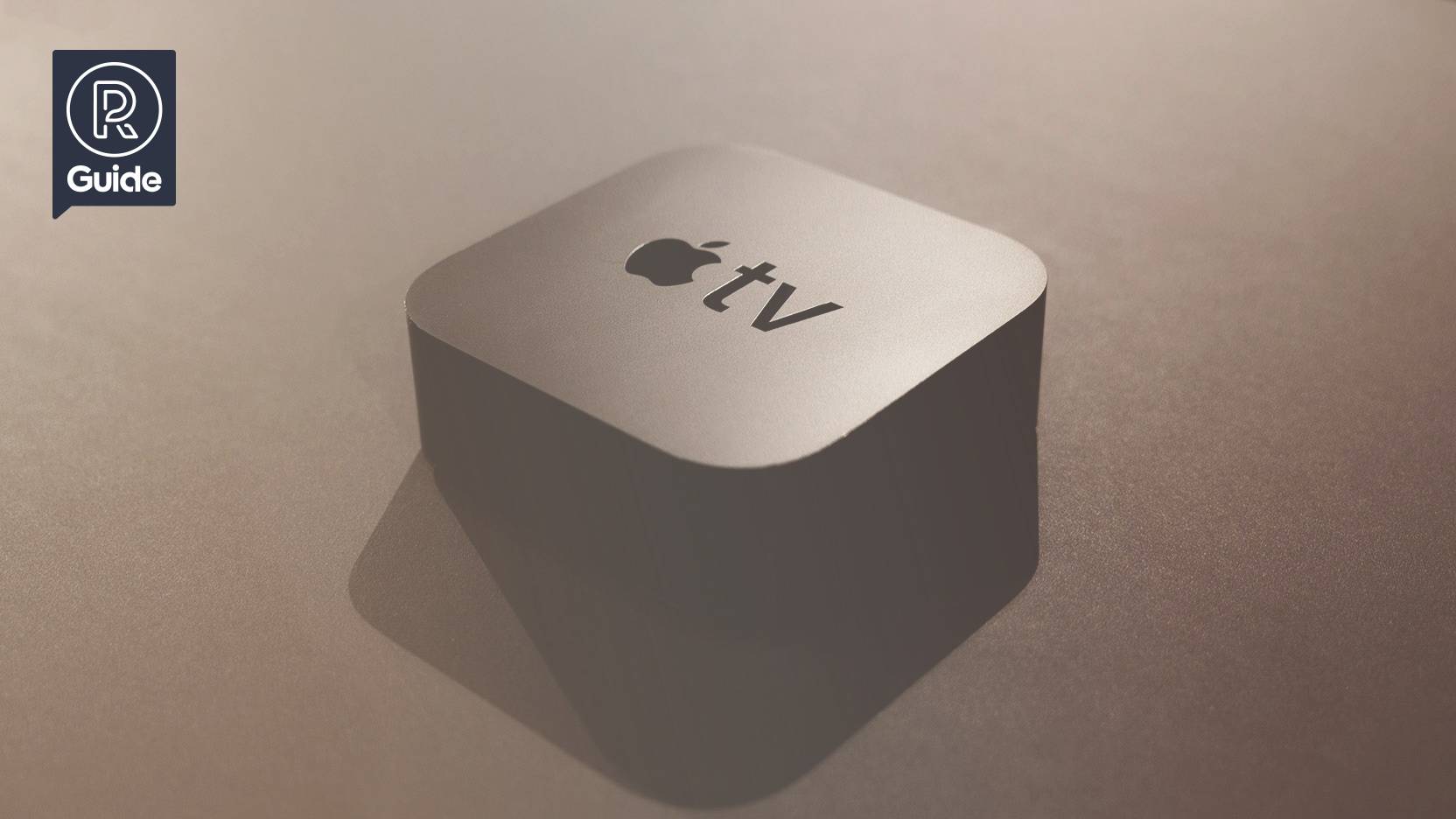
Apple’s Apple TV is one of the most popular media players currently on the market. Essentially, it’s a little box that you connect to your TV so you can watch films and series from a wide range of popular streaming services. Apple TV is currently the best premium choice in our test of media players.
You either subscribe to one or more services, such as Netflix, or you can rent or purchase films through either Apple or other video-on-demand services. Current versions of Apple TV can also run games that you control either with the remote control or with a real game controller.
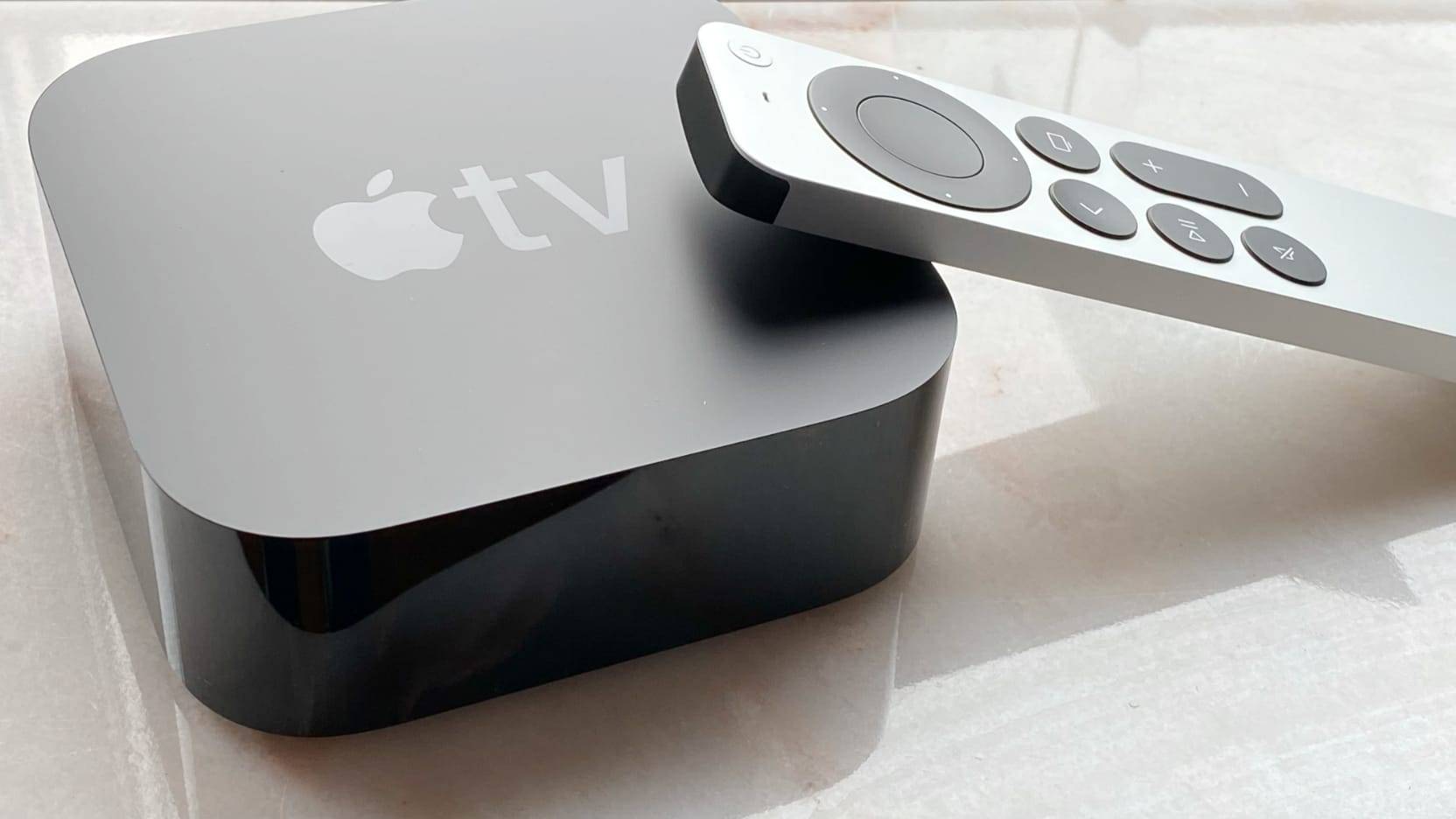 Apple TV 4K with Siri Remote
Apple TV 4K with Siri Remote
What is Apple TV?
Apple TV is a media player for your TV. You connect it with HDMI to your TV and then use either a cable or Wi-Fi to connect it to the internet. After that, you can run various apps for popular streaming services such as Netflix, Amazon Prime, BBC iPlayer, ITV Hub and NOW TV and more (and if you you think streaming services are confusing, check out our test of streaming services to find out what’s what).
Apple TV is like a TV set-top box in that you plug it into your TV and control it with the remote control (or an app for iPhone and iPad). The difference is, of course, that it supports internet services for streaming video rather than normal TV channels (it has no connections for aerials or similar things like a normal set-top box). And nor does it have a DVD or Blu-ray disc player, if only because the unit’s physical dimensions make that impossible.
 If you don't have a smart TV, Apple TV is a convenient choice for streaming services.
If you don't have a smart TV, Apple TV is a convenient choice for streaming services.
Other than the cost of buying an Apple TV, there are no monthly fees for subscriptions relating to the device itself. However, there’s a monthly fee to use some of the apps, such as Netflix. But these can run on your computer, mobile or tablet with the same subscription as well. However, many apps don’t require a subscription to run, such as YouTube, but you need to create an account with Apple (free) to download apps to your Apple TV.
What are the different models of Apple TV?
Apple TV has been available since 2007 in a variety of models. Today, there are three models on the market, although only the two latest models are officially sold by Apple.
Apple TV 4K (generation 2)
The biggest new thing about the second-generation Apple TV is the new remote control with physical buttons instead of a touch pad. The good news if you own an Apple TV 4 or Apple TV 4K is that you can also buy the new remote control and pair it with your existing Apple TV. Other than a new remote control, the media player itself looks identical. On the inside, the hardware has been updated to an Apple A12 Bionic – the same chip that sits in the iPhone XS. It also comes with full support for HDMI 2.1, variable refresh rate (VRR), high frame rate and Wi-Fi 6, and ARC and eARC (audio return channel and enhanced audio return channel) via the HDMI port.
If you already have an Apple TV 4 or 4K, there’s not much reason to upgrade, but if you dislike the remote, you can always buy one separately. But if you’re going to buy a new Apple TV, there’s no reason to go with the older model as the price difference is negligible.
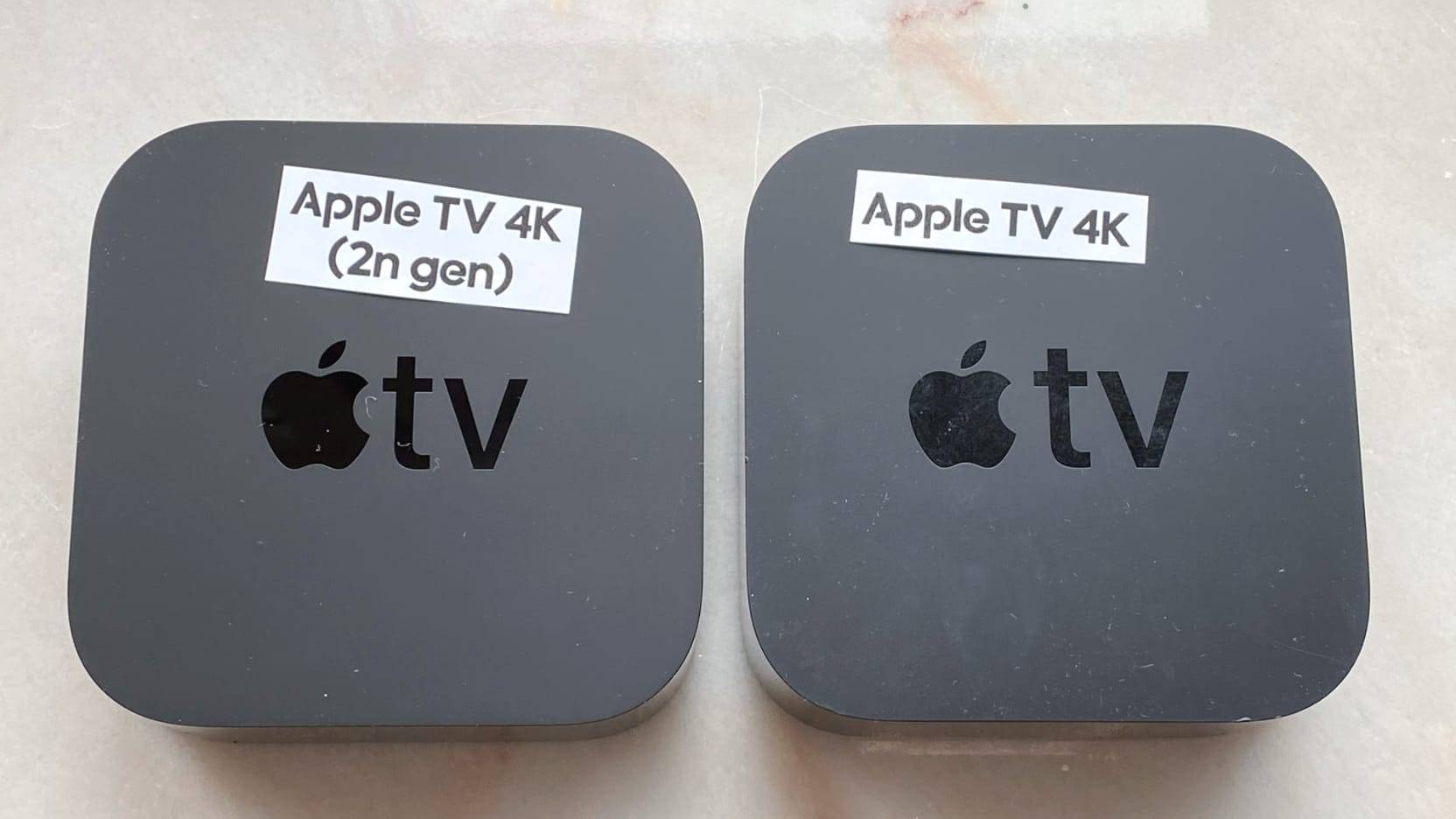
Apple TV 4K
Apple’s last-but-one version of the media player is very much like its predecessor. All the functions and the remote control from the earlier version are there, but what’s new here is slightly faster hardware that supports 4K resolution and HDR. The device also recently received support for the Dolby Atmos audio system via a software update.
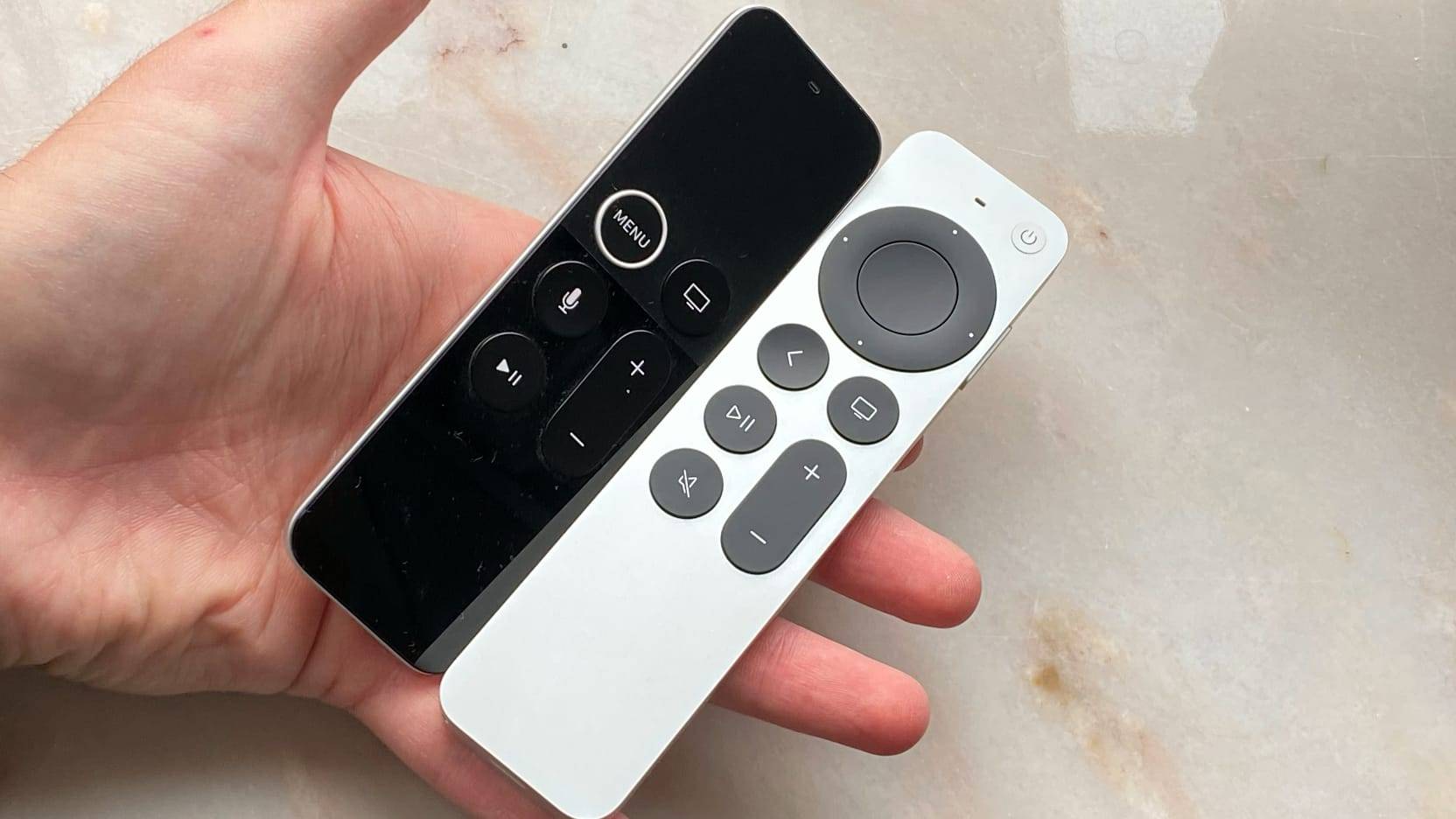 Old vs new Apple TV remote
Old vs new Apple TV remote
Apple TV 4
The fourth generation Apple TV was in many ways the big step people had wanted for many years. Instead of running “a variant of iOS”, the operating system was renamed TVOS. It brought not only an entirely new interface, but also an app store and the ability to download both apps and games as required. The biggest difference to the above-mentioned Apple TV 4K is that it doesn’t support 4K resolution.
The remote control has a built-in microphone for voice commands via Siri and a touch pad that you use both to navigate menus and to control some games. The fourth-generation Apple TV still receives updates to the operating system, which means it now supports AirPlay 2 and can act as a controller for your home's Homekit-compatible products.
Older models
- First generation: A testimony of how far Apple TV has come since it saw the light of day in 2007 (briefly known as “iTV” before becoming Apple TV). The first generation Apple TV had a built-in hard drive and required a computer with iTunes to act as a server for it to work (a requirement that has since been dropped).
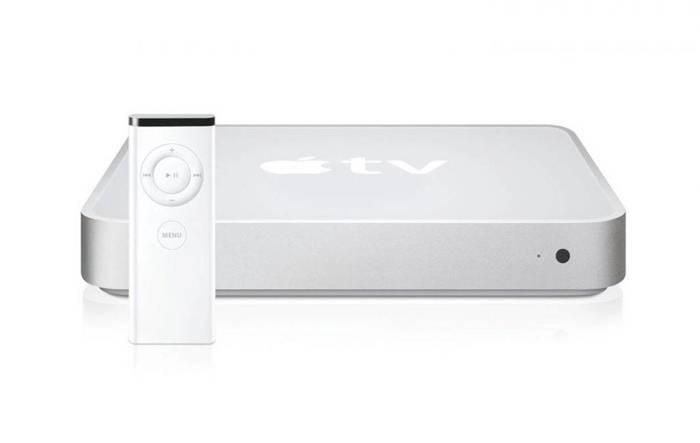
The first generation Apple TV was quite different from today's model.
Apple TV 2: Identical in appearance to the third generation Apple TV. Run a variant of iOS as the operating system, but lost the YouTube app a couple of years ago. Only supports 720p resolution.
Apple TV 3: Became a real top seller in its time and supports 1080p video. Relies on pre-installed apps, such as YouTube and Netflix. Has access to rent and purchase films via iTunes and also supports AirPlay.
How to control Apple TV All Apple TV devices come with a remote control. If you also have an iPhone or iPad, you can download a remote control app to control your Apple TV using that instead.
Older models of Apple TV (3rd generation and earlier) use a standard IR remote control, which you simply have to point at the device to make it work. However, the three current models of Apple TV use radio technology to talk to the device, allowing you to hide your Apple TV away in a cabinet or behind your TV and still be able to control it.
The new Siri Remote came with the Apple TV 4K (gen 2). This is a hefty piece of aluminium, with primarily physical buttons. You can use the D-pad as a touch pad (and turn it off) if you want. The controller is still charged via a Lightning connector, just like an iPhone.
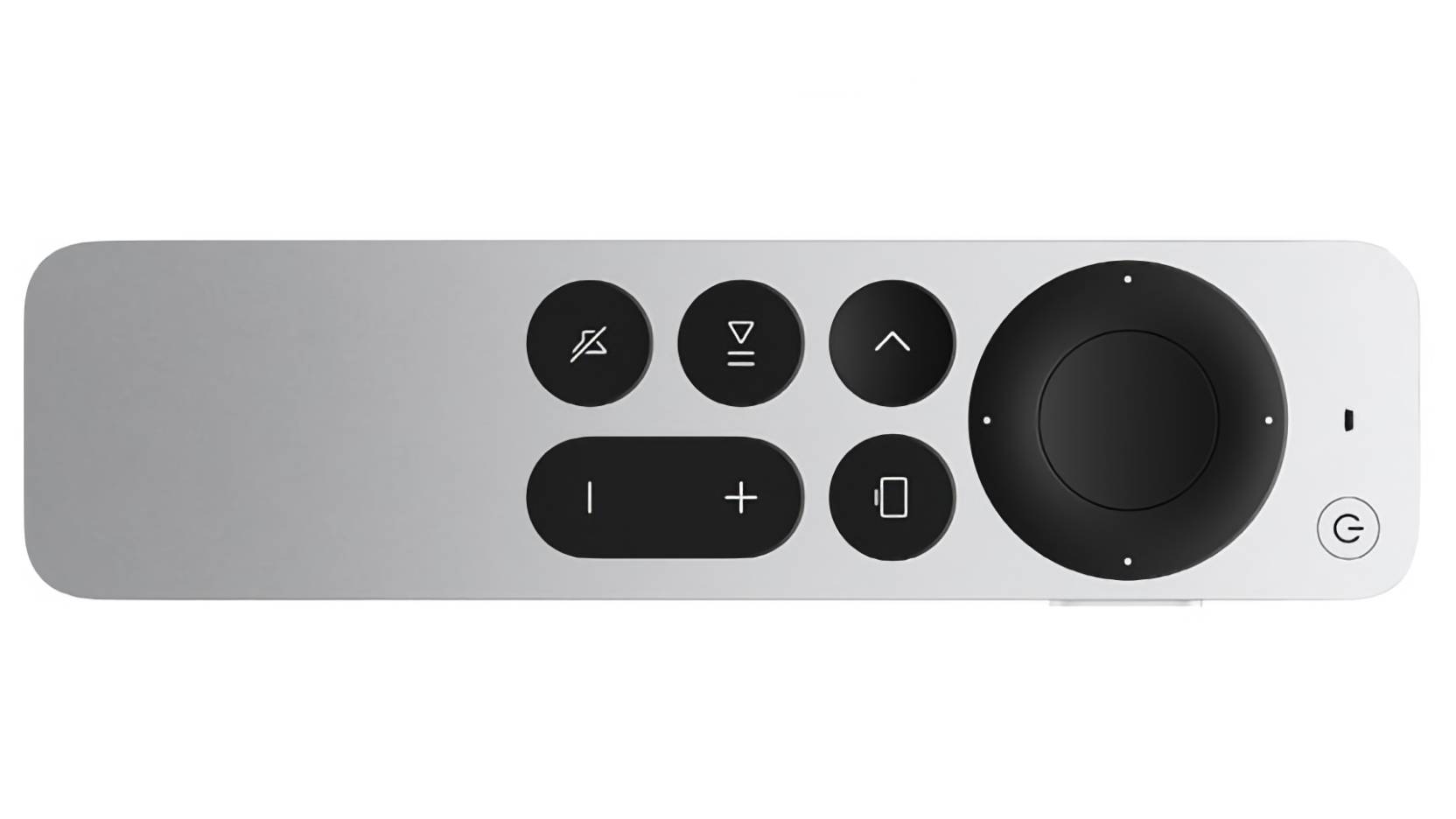
The new Siri Remote is compatible with Apple TV 4 and Apple TV 4K and you can [buy it separately](/pl/95-3200142160/Remote controls/Apple-Siri-Remote-2021 prices) if you want.
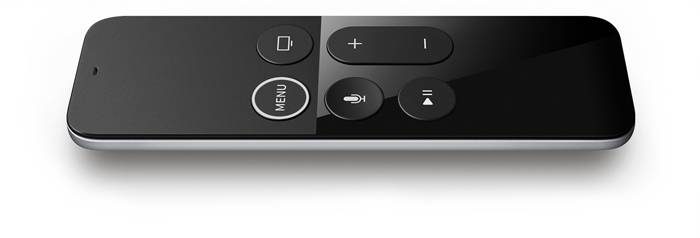 The remote control has a built-in touch pad, motion sensor and microphone. It charges with the same cable as the iPhone and iPad.
The remote control has a built-in touch pad, motion sensor and microphone. It charges with the same cable as the iPhone and iPad.
The current remote control, Siri Remote, as Apple calls it (identical to the Apple TV 4K and fourth-generation Apple TV), doesn’t have a traditional D-pad, but instead a touch pad. With it, slide your finger in the direction you want to go to navigate. The reason for this is that the touch pad can also be used to control some games. The remote control can also detect movement, which is also used to control some games.
Siri Remote also has a built-in microphone that works with Apple's Siri voice assistant. This allows you to control some functions with your voice instead of using the touch pad. For example, you can voice search on YouTube instead of having to enter a long search term.
Apple TV and Siri
The three latest releases of Apple TV come with the Siri voice assistant built in. Using the microphone button on the remote control, you activate the assistant and then speak into the remote control to give commands.
In addition to many of the common commands that work on your iPhone, iPad or Mac, there are a few specific commands for Apple TV. For example, you can ask Siri to show you top films from a particular year, or to play a specific programme from a certain streaming service. You can also launch apps using voice commands or play the music you want. You also use your voice in the search function, where you can speak what you want to search for instead of typing, either with whole words or by letter.
Apple TV and Homekit
Homekit is Apple’s system for the smart home. If you have Homekit-compatible devices, such as lights, door sensors etc., your Apple TV will come in handy. In its basic version, you link all Homekit products to your phone, but because Wi-Fi access is required, you’ll lose contact with them when you leave home. So it’s a good idea to set the Homekit up on a device that’s always in your home, like your Apple TV (you can also do it with an iPad or Apple’s Homepod smart speaker if you like).
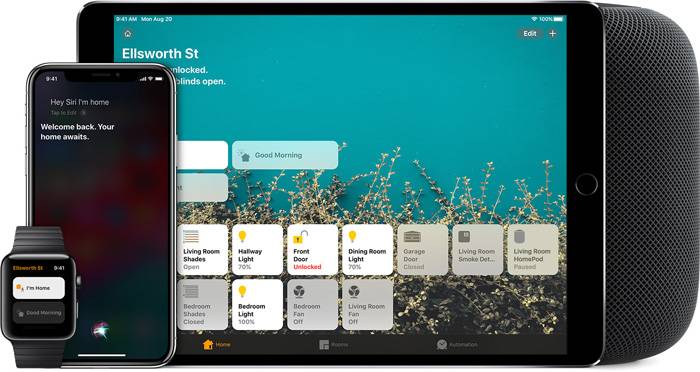 Apple’s Homekit can be run via Apple TV, so you can control your home when you’re not there.
Apple’s Homekit can be run via Apple TV, so you can control your home when you’re not there.
This function is called setting up your Apple TV as a Home Hub, and it allows you to remotely control your smart home products. With Homekit connected via a home hub, you can also give other people permissions more easily, so that everyone living in your home can control the connected devices.
Apple TV and AirPlay
AirPlay is Apple’s technology for transferring pictures and sound from a phone, tablet or computer to a receiver such as an Apple TV. Apple TV 4 and 4K support AirPlay 2, while third-generation Apple TV supports the first version of AirPlay.
The difference between AirPlay 1 and 2 is quite simple. The first version of AirPlay is capable of transferring pictures and sound to a device, such as mirroring the screen from a computer to a TV. AirPlay 2 can do it too, but it also adds support for multi-room audio. This means you can set whether all of your home’s AirPlay 2-compatible speakers should play the same music, or whether only two rooms should play the same thing while a third plays something else.
In any case, Apple TV has full support for playing content from your iPhone, iPad and Mac. You either mirror the whole of your device screen, or you can choose to just transfer the content from a specific app.
What streaming services are available on Apple TV?
It’s almost easier to list the streaming services that aren’t available on Apple TV, which shows the enormous power of this device. Of course, you’ll find the the main services for films and TV series, such as Netflix and Amazon Prime Video, but you also get things like BBC iPlayer and ITV Hub. There are also a wide range of smaller services.
It’s worth remembering that it’s pretty much only YouTube that’s free to download and use. Most others have either a monthly fee that’s somewhere around a tenner, or you pay per film you want to rent or buy.
Most mainstream TV channels have apps for Apple TV, as do premium channels, allowing them to access your subscription and many of those channels via Apple TV.
Sports and news are also represented. International news giants such as CNN, Bloomberg, Aljazeera and Reuters can be found in app form. Sport is primarily divided by sport, so there’s one app for tennis, one for UFC, one for golf and so on, but Eurosport is also available.
What apps are available for Apple TV?
What do you intend to use an Apple TV for, other than watching streaming services? This very much depends on your own interests.
Both children and adults enjoy education and facts in various forms. There are plenty of educational apps for kids (often the same version as for iPhone and iPad) and for adults there are online courses from Coursera and Udemy, amongst others. There is the CuriosityStream documentary service, as well as apps from NASA and TED, and lots of star-gazing apps in different forms to enjoy
Otherwise, there are plenty of apps relating to food and health. Everything from food programmes to recipes, together with exercise videos for everything from strength training to yoga. If you love travelling, you can sit on your sofa and check out what TripAdvisor and Airbnb have to offer.
Of course there are also weather apps, because who doesn’t love to talk about the weather? And a lot of “background apps” that show a cosy fireplace or a full-screen aquarium on your TV.
If you have a computer or networked hard drive where you store your local films and series, there are a variety of apps for that too, the most famous being Plex and VLC.
If you don’t feel like watching anything, Apple’s own podcast app is available, together with a wide range of other radio programmes and podcasts.
What games are available for Apple TV?
Games is the bit where Apple had hoped for more than it actually achieved. Apart from anything else, there seems to be a very low interest in games, which in the past meant developer Mojang completely removed smash hit Minecraft from Apple TV.
But it’s not entirely dead on the games front. There are many free games intended for playing in short sessions for people of all ages, such as Minion Rush. If you don’t mind paying, there’s also the much praised Alto's Adventure and the sequel Alto's Odyssey to get your teeth into
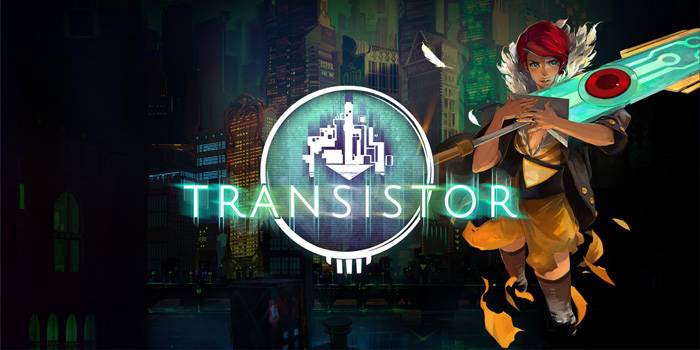 Transistor is a really well-made role-playing game that’s also available on Apple TV.
Transistor is a really well-made role-playing game that’s also available on Apple TV.
Other games fall into two categories, full-size and serious games, and party games. There’s a load of tennis and bowling games that use the remote control’s motion sensor for control, and so does the popular dance game Just Dance. The unearned king of modern party games, the Jackbox Party Pack, is also available on Apple TV and allows users to control it with their mobiles.
The more serious games, which work best with a real game controller, include Oceanhorn (the closest you’ll come to Zelda on Apple TV) and the legendary role-playing game Chrono Trigger. Newer games with a focus on storytelling such as Transistor and Broken Age are also available. That said, the development of more recent games for Apple TV is terribly slow and it’s essentially the same games that are available for iPhone and iPad. Depending on the game, you can certainly keep playing when you leave home, but unfortunately, games aren’t really a big thing for Apple TV.
The range of games has improved slightly since autumn 2019, when Apple launched Apple Arcade. This is a subscription service for games, a bit like Netflix or Spotify. With Apple Arcade, you have a wide range of exclusive games without advertising or in-app purchases. Most of these games are intended for iPhone and iPad, but they have also given Apple TV a much needed boost in the area of games, including with the brilliant Oceanhorn 2.
What’s new in Apple tvOS?
Apple TV OS, tvOS, or Apple TV Software as it was previously known, is the software that controls Apple TV. Initially it was part of the same iOS system as the iPhone and iPad, but then it was separated off into its own system in the same way as iPadOS.
Here’s a brief history of the versions and what was included in each.
- IOS 4.1 (Apple TV Software 4.0-4.1) – 2010. Came with the release of Apple TV 2. Gave support for AirPlay for audio and later also for video.
- IOS 5 (Apple TV Software 4.2) – 2011. Came with Apple TV3 and allowed a whole new menu design, 1080p support and AirPlay mirroring.
- IOS 6 (Apple TV Software 5.1) – 2012. Support to send audio to AirPlay-compatible speakers.
- IOS 7 (Apple TV Software 6.0) – 2013. Support for iTunes store, iTunes Radio and iCloud Photos, amongst others.
- IOS 8 (Apple TV Software 7.0) – 2014. Refreshed interface and family sharing.
- tvOS 9 – 2015. The first tvOS release came with the release of Apple TV4. Completely new interface and support for App Store, Siri, Apple Music and third party gaming controllers.
- tvOS 10 – 2016. Support for Homekit control and the new Photos app.
- tvOS 11 – 2017. 4K support with the release of Apple TV4K. Automatic connection of Apple AirPods, dark and light interface, and Home screen synchronisation between multiple Apple TV devices.
- tvOS 12 – 2018. Support for Dolby Atmos, up to 7.1.4 channels. Support for home control services from Control4, Crestron and Savant.
- tvOS 13 – 2019. Support for multiple Apple IDs in built-in apps, support for DualShock 4 and Xbox One controller. Apple Arcade also appeared in this release.
- tvOS 14 – 2020. Picture-in-picture for third-party apps, support for 4K AirPlay and sharing audio via AirPods, and new support for security cameras in Homekit.
- tvOS 15 – 2021. Control Apple TV via Homepod, support for using Homepod and Homepod Mini in mono or as a stereo pair with Apple TV, support for spatial audio via AirPods and AirPods Pro.
Apple TV accessories
When you buy an Apple TV device, it’s already relatively complete. Power, video and charging cables for the remote control (the same Lightning cable as the iPhone) are included. The thing you will need to buy if you don’t already have one is an HDMI cable to transmit video and audio to your TV. If you’re using fourth-generation Apple TV any cable will work. The transfer is digital, so the ones and zeros involved are affected very little by the cable type and material used for the connector.
For Apple TV 4K, you also need an HDMI cable. However, if you have a TV that supports 4K resolution (which you should if you’re going to get any benefit from Apple TV 4K), you’ll also need a cable with a slightly faster transfer rate than older HDMI cables. Look for cables marked “High Speed” or “Premium High Speed” (HDMI 2.0, if you’re interested in which version of the standard this is), as these comply with a more recent version of the HDMI standard, with a higher transfer rate that works for 4K resolution content.
Provided you don’t include Homekit devices as Apple TV accessories, there are otherwise a couple of types that are useful.
If you want to use Apple TV to play games, the Nimbus game controller is a handy accessory.
One is a wall mount to hide your Apple TV behind a TV for a neater impression (if your TV is standing on a table stand, there are wall mounts for Apple TV that can use the screw holes for wall mounts on your TV).
The second is a real game controller. If you intend to play a lot of games on your Apple TV (despite the rather thin selection), this is a very sensible investment. Especially via Apple Arcade, there are some games that work better with a real game controller. Some games work with both the remote control and a game controller, while others require a real controller. There are relatively few official options here, but the Steelseries Nimbus is one of the standard options. It charges with a Lightning connector too, just like the remote control, and also works with your iPhone and iPad if you want to play on them. A more recent update has extended the opportunities for game controllers for Apple TV.
Now you can also connect the PlayStation 4 DualShock 4 controller and Xbox One controller to your Apple TV. Even if they aren’t official Apple controls, we’d say they are much better for controlling your games with.
Disadvantages of Apple TV
Is Apple TV the ultimate media player without any disadvantages? Depending on your requirements, what other devices you have in your home and your budget, there are a few different answers to that question.
If you already have mostly Apple gadgets at home, such as an iPhone, a Mac or an iPad, Apple TV complements them really well. Many of the pay-to-use apps available for Apple TV are also available in a version for iPhone and iPad, so if you buy them (or have already paid for them), getting them on an Apple TV is free.
And if you only run Apple devices, of course you can also use AirPlay and the remote control app without any problems. It’s not so good for Android devices, where it varies between fiddly and not working at all to get the functionality (and even then not by any official route). It also depends on your viewing habits. Many smart TVs today have reasonably competent apps for the most common streaming services, so an Apple TV can be a bit redundant. If you don’t have a smart TV, or if its apps are out of date and aren’t working very well, it might be a good idea to upgrade the whole thing with an Apple TV. At the same time, Google Chromecast is a much cheaper and relatively simple alternative for this. If you like Netflix interactive titles, like Black Mirror: Bandersnatch or Minecraft Story Mode, you'll be disappointed that they don't work with Apple TV.
One thing that can be useful to know is that Apple TV doesn’t work as a set-top box with a hard disk to record programmes. Nor can it play back videos or photos from a USB stick because it doesn’t have USB ports (and tvOS doesn’t support this anyway). This type of problem can be solved with some video and media player apps, such as Plex, but requires a computer or a network-attached hard drive too.